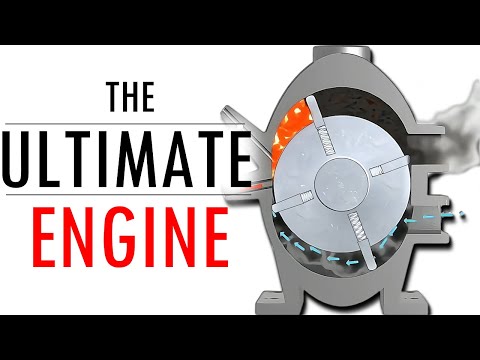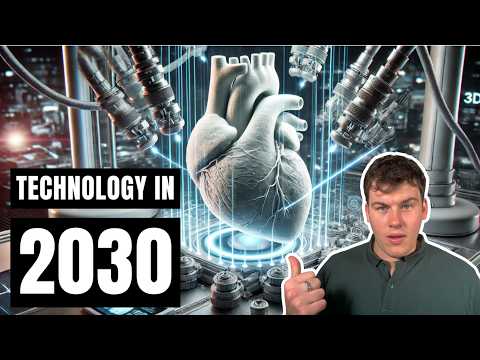You May Not Like It But this Is What Peak Combustion Technology Looks Like - Rotary Vane Engine

When you think of a rotary engine you probably think of this, and this is a Wankel engine, of course, the kind of engine that Mazda used to put in their cool cars back in the day Well it's still sort of alive because they recently put it in this, which is a plugin hybrid but this is different, because here the rotary wankel performs the most shameful function of all It is a range extender Now what's important about rotary is that it got two things it nailed, it was a success in terms of two things, and that is power to weight ratio and engine smoothness But it was a failure in terms of pretty much everything else Low RPM torque, emissions, fuel economy, longevity It really didn't do any of these things well but it was and still is and will always be a very fun and very exciting engine so we're not just to call it a failure, we're going to call it a beautiful failure to hopefully appease the segment of the rotary fan population, this segment which likes to post novel-length comments below my videos to convince me that a rotary is better in every way Please, spare me, at least this time Now because of these failures the rotary engine failed to upset, let alone replace the traditional piston engine but it got something right It got one part, the rotary wankel engine got one part very right and no it's not the wankel part, it's the rotary part Traditional piston engines dominate because they have a round piston in a round cylinder This is their main inherent benefit and the reason why they're everywhere A round piston in a round cylinder creates a very good, very consistent, and very longlasting sealing of the combustion events inside the engine And it is also at the same time very cheap and very easy to manufacture and it is also easily scalable because you can both increase the size of the piston and cylinder or just make more pistons and cylinders to create more power But a reciprocating piston in a cylinder is also the reason why we constantly have to convert reciprocation into rotation, and for lack of a better word, that is simply stupid, because the conversion of reciprocation into rotation creates massive vibrations and imbalances The conversion of reciprocation into rotation is the reason why I had to explain secondary engine balance 700 billion times in my videos The conversion of reciprocation into rotation limits maximum rpm and it is the reason why traditional engines need a connecting rod and a crack shaft: to large heavy items that never see combustion but at the same time massively increase the size and the weight of the engine and the number of moving parts A rotary engine is inherently better in this way because it is based around rotation and we need the output from the engine to be rotation because the transmission rotates and the wheels rotate, we need rotation. And if the engine already rotates itself, then we don't have to convert anything, we connect it to everything else, and by doing this, we eliminate a lot of problems, a lot of size, a lot of weight, and a lot of moving parts This is why according to both physics and common sense, the ultimate internal combustion engine should be a rotary engine, but it should not be a wankel It should be this And this is a Rotary Vane Engine First, allow me to explain how it works and then I will explain how it beats both, the piston and the Wankel engine, at everything As you can see we essentially have a circle rotating inside an ellipse, and we have four vanes extending in and out of the housing. As the vanes rotate, they change the volume of the spaces they create We have air coming in through the intake ports. As the vane rotates, it pushes the air into an ever smaller space which of course compresses the air When the air is fully compressed, we add the fuel And then we use a spark to ignite the air and fuel mixture As the combusting mixture expands, it pushes on the vane which rotates the internal circular rotor assembly, creating rotational torque output As the vane rotates further, it pushes the exhaust gas out through the exhaust port As you can see, we have four combustion events for one full 360° rotation of the circular rotor In a wankel engine, we have one combustion event for one full rotation of the eccentric shaft In a traditional four stroke piston engine, we need two full rotations or 720° of crankshaft rotation for just one combustion event. This means that a rotary vane engine significantly outpowers both
the wankel and the traditional piston engine, but high power is just one of the features It's just one item on a long list of benefits There is zero reciprocation in the vane engine which means that we don't need a connecting rod or a crankshaft. We don't even need a cylinder head. So, compared to a traditional piston engine, we have an engine that is more power dense while at the same time being more compact, more lightweight, with less moving parts, and with zero vibrations But the vane engine is even simpler and even smoother than a wankel which is known for its simplicity and smoothness And that's because the wankel, if we observe the motion of the rotor, we can see that this is not pure rotation. It's a complex motion with elements other than rotation in it, which means that the rotor creates some vibrations when the engine is operating It is still a lot less than a reciprocating piston, but it is there On top of this, the wankel engine needs a eccentric shaft and the rotor needs to be geared to this eccentric shaft for the engine to operate and gearing introduces parasitic losses. Compared to this, the vane engine is, as we said, pure rotation There is nothing other than pure rotation, which means that we don't need an eccentric shaft, we don't need any gearing, we don't need these parasitic losses. In fact, the rotor of the engine can be the output
of the engine, we can connect a transmission, or a wheel, or whatever we want to the rotor itself, which means perfect smoothness, zero vibrations, and even less moving parts, even less weight, and less complexity than a wankel. In fact, the vane engine is in this regard kind of like an electric motor It's just rotates. But we're still just getting started with the benefits because the vane engine isn't just a perfectly smooth powerhouse. It is also a torque monster. And it is far better suited to creating massive low RPM torque compared to a wankel or even a traditional piston engine In fact, in this regard too, it's very similar to an electric motor but unlike an electric motor, it doesn't need a ton of batteries to get you from A to B If we observe the traditional piston, we will see that the stroke of the crankshaft is our lever arm. The greater the stroke, the greater the torque The problem with the traditional design is that our lever arm is not constant As you can see during the combustion cycle there is only one instance when we have 90° between the conrod and the crankshaft. There is only one instance when we have a maximum lever arm
Before and after this point, as you can see, our lever arm starts disappearing, which means that our torque output decreases. To top it all off, we don't even have an optimal lever arm in the first place, because the force isn't located directly above the end of the lever arm. Instead, it acts through a connecting rod which is angled, which creates force irregularities and losses All of this is the reason why torque output during the combustion cycle of a traditional piston engine lasts very briefly. It has a very short peak with a rapid rise and a rapid fall
The wankel is no better, as you can see here too, we have a sub-optimal lever arm geometry leading to sub-optimal torque output But in a vane engine none of this is the case because the vane engine has two things that the piston and the wankel can only dream about A very long and constant lever arm and the combustion force acting at the end of that lever arm for maximum torque This means that even a very small compact vane engine is going to have a massive torque output because we're going to have a big distance between the end of the lever arm where the combustion force acts in the center of the rotor where the torque output is To top it all off, the lever arm never changes its position in relation to the combustion force throughout the entire progression of the combustion event, which means that we get a very broad, fat, tall torque spike that lasts pretty much as long as the combustion stroke of the engine. And this gives us absolutely incredible torque even at the lowest of RPM. And remember, we don't even have to wait another 450° of engine rotation to get another big, fat torque spike because in the vane engine, the end of one combustion event is the beginning of another. We need a four cylinder piston engine to achieve the same thing that a single vane rotor does And that is not all, still that is not everything not all the benefits, because the vane engine isn't just outpowering and out-torquing the piston engine It is even more efficient than them. So, let us again observe and shame the piston and the wankel to better understand the difference in efficiency When combustion starts, the surface area of the crown of the piston is what receives the force of combustion. The cylinder head and cylinder walls also receive the force of combustion, but here it's lost in the form of heat It is only the piston crown surface area that can turn the force of combustion into useful work And as we know, the surface area of the piston crown, of course, remains constant throughout the combustion event and the life of the engine The same goes for the rotor of a wankel. The combustion cavity and the surface
area of the rotor sides always remain constant This is one of the reasons why exhaust gas remains highly pressurized at the end of the combustion stroke. There's still a lot of energy left and lost, because there was not enough time and space for all of the combustion energy to be harnessed This is why the Atkinson cycle exists In the Atkinson cycle the combustion or expansion stroke is longer than the compression stroke The longer the combustion stroke, the more time we have to harness all of the energy of combustion In an ideal Atkinson cycle, the exhaust gas is at atmospheric pressure when the combustion stroke finishes. It's at atmospheric pressure because we harnessed all the energy from the combustion Now what the vane engine does is that it does not increase the time to harness combustion, but it most certainly increases the space As the combustion event progresses, the vane extends further outward which means that we are increasing the surface area onto which combustion acts Imagine the bore of the cylinder and the piston diameter increasing as combustion pressure builds. As we increase the surface area, we are able to harness more of the energy of combustion because we give the combustion more space onto which it can transfer its energy. This means that theoretically in a vane engine, the exhaust gas can be near atmospheric pressure by the time the combustion event finishes, which means that we have greatly improved efficiency So let's sum it up. The rotary vane engine is vibration free
It's like an electric motor in that regard It has a better power to weight ratio than other combustion engines It makes more torque than other combustion engines It is more efficient than other mainstream popular combustion engines And to top it all off, it has less moving parts which means that it has the potential to be cheaper and easier to manufacture, and cheaper and easier to service and rebuild So it's better at everything that matters, which means that now it's time to address the elephant in the room. If it's better, where is it, or as comments section pundits like to say: "If it was better, we would already be using it". Well, I'm sure that at some point in history somebody took a piston engine and showed it to a person on a horse, and the person replied from their high horse saying: "If it were better, we would already be using it" Things tend to not exist and not be used before they start existing and get used. That being said, the rotary vanes are everywhere around us But not as engines, as pumps. If you ever opened an impact gun, you found a rotary vane pump in it
They're in espresso machines, they're in oil pumps of cars, they're in all sorts of pumps They're, you're using one whenever you go to a gas station to fill up any kind of gas vehicle or diesel vehicle for that matter. They're everywhere as pumps because when they're working as pumps, each of the vane-created compartments is moving the same fluid But when they're an engine, each of the vane-created compartments is doing a different thing, so we need to seal them pretty much perfectly against each other And as we know from wankel engines, sealing rotary things is not that simple, but the rotary engine has solved sealing to a great extent Not perfectly, but that's not the problem of the vane engine We have another problem to think about. And if you observe the vanes, you can see how as RPM increases of the engine, the centrifugal force, that is trying to fling the vanes outward, is increasing more and more, which means that it starts pushing them harder and harder into the housing, which increases friction, which leads to losses, and a reduced lifespan of the engine. Now, in a traditional vane engine design, the vanes are spring-loaded to ensure constant contact with the walls of the housing of the engine There were even suggestions to use rollers at the end of the vanes to reduce friction, but now technology has evolved to a point beyond this, and what could be a viable solution now, is a no contact gas seal We maintain an extremely small gap between the end of the vane and the housing A choking effect occurs, which prevents any significant leakage and at the same time, we are preventing contact which means we have zero friction So no losses, no reduced longevity We would not be using springs in this case, but something more advanced, like a ceramic piezoelectric actuators This might sound sci-fi, but it's not, because for example Rolls Royce patented such a system for their jet engines to ensure a turbine to shroud the ideal constant distance gap between turbine to shroud without any contact ever The deal with the rotary vane engine is that, yes, it has a sort of Achilles heel It has its challenges that need to be overcome, but there has not been a significant attempt to create this engine since the '90s. There has been an attempt by a well-published
PhD professor called Roy Hartfield. But he designed a 24 vane, not a typical rotary vane engine, 24 vanes and he tried constant combustion like a jet engine, so something very complex He tried a crowdfunding attempt at Indiegogo, not enough funds were ever collected, so as far as I know the project lost its steam. There were also amateur attempts here and there, but pretty much everything at a DIY shed sort of level. There has not been an attempt by a professional enterprise with significant financial backing, and I think that although, yes challenges exist, the benefits of this design are so incredible, that I would really like to see someone try to at least get us a prototype in the near future because the potential, the theoretical, and physical and common sense potential of this thing is very, very serious, and yes, I know electric vehicles, electric motors, blah blah blah blah blah. We heard it a million times already, but I think that by now it is evident that
battery technology is not really going to progress at some astounding pace that many people have claimed many times. It's going to take some time and we obviously can't electrify everything, which means that there is going to be a long transition period ahead of us, and as any good investor would like to say: Never put all your eggs in one basket And there you have it the rotary vane engine Theoretically, it is the ultimate combustion engine, and I'm sure you enjoyed learning about it because the words of my explanation were supported by graphics and animations which helped you wrap your head around the working principle more easily But what if we could take it a step further What if we could make it interactive You grab a hold of the rotor with your mouse and then you move it and you see in real-time how the operation impacts various aspects of the engine and the concepts related to it Well, this is exactly how you learn with Brilliant. By doing. And in my book at least, there's no better, more human way to learn Because concepts that are explained to us in a visual, real-time interactive way are memorized permanently. And they're not just memorized, in fact, they are holistically, genuinely understood and their relationship with other concepts is better understood this way too. And Brilliant covers a very wide range of topics, everything from math
and data analysis, to computer science, science and engineering, programming, AI, you name it It's all in there explained in the most visual, most palpable, most interactive, and most approachable way possible So if you want or need to learn about the concepts that shape our world, then I suggest you try Brilliant And to try everything Brilliant has to offer for free, for a full 30 days, you can go to brilliant.org/d4a or click this link in the description and you'll get 20% off an annual premium subscription Before I end the video, I would just like to give a very special thanks to Brandon who is one of my subscribers who got in touch with me, drew my attention to this engine. So, Brandon, thank you very much. I really enjoyed our back-and-forth in the emails and learning about all of this and you were instrumental in the creation of this video and I very much appreciate it So that's pretty much it for today as always thanks a lot for watching and I'll be seeing you soon with more fun and useful stuff on the D4A Channel
2024-09-03 12:21


